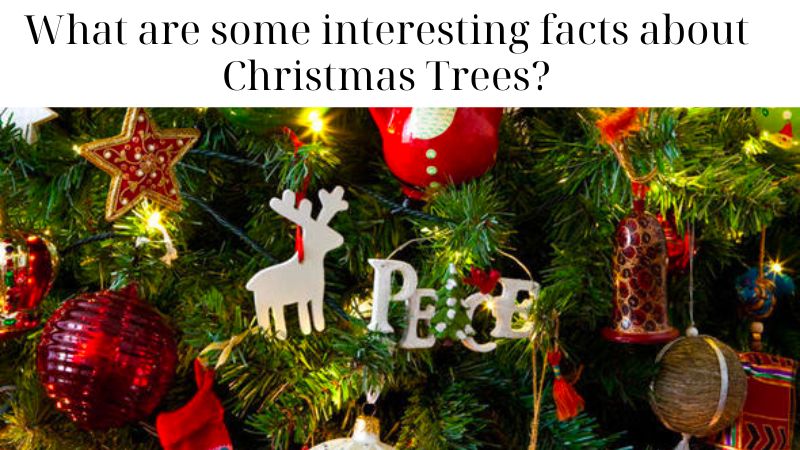What is the history of Christmas Trees?
The Origins of Christmas Trees
The origins of Christmas trees can be traced back to ancient pagan traditions, particularly in Europe. Evergreen trees were seen as symbols of life and fertility during the winter months when most other plants had withered.

Read more: fake christmas tree black friday sale
The Evolution of Christmas Trees Over Time
The evolution of Christmas trees over time reflects the changing customs and technologies of the eras in which they have been celebrated. Originating from ancient pagan rituals and adapted into Christian traditions, early Christmas trees were simple and adorned with candles and edible treats.
As time passed, the introduction of electric lights in the late 19th century brought a safer and more dazzling illumination to trees. The 20th century saw the rise of artificial trees, making them more accessible and reusable.
Today, Christmas trees come in various colors, styles, and materials, reflecting diverse cultural and personal preferences. The evolution of Christmas trees showcases how this cherished holiday symbol has adapted and flourished, remaining a timeless and cherished centerpiece of the festive season.
What is the meaning behind the Christmas Tree?

The Symbolism of the Christmas Tree
The Christmas tree holds rich symbolism in the holiday tradition. Its evergreen nature signifies the enduring spirit of life even during the harsh winter months, while the lights and ornaments represent the hope and joy of the season.
The tree’s triangular shape has been associated with the Holy Trinity in Christian symbolism. Additionally, the act of decorating and gathering around the Christmas tree serves as a symbol of togetherness, family unity, and the sharing of love and goodwill.
The Role of Christmas Trees in Modern Celebrations
In modern celebrations, Christmas trees play a central role in fostering the holiday spirit. Beyond their religious or historical significance, Christmas trees serve as a beloved tradition that brings families and communities together.
They symbolize joy, hope, and renewal, acting as a visual reminder of the festive season. Decorating the tree has become a cherished family activity, creating cherished memories and traditions.
Christmas trees, whether natural or artificial, continue to serve as a beautiful and heartwarming tradition that spreads happiness and goodwill, making them an enduring and beloved part of modern celebrations.
What are some interesting facts about Christmas Trees?
– One interesting fact is that the use of evergreen trees for decorations dates back to ancient civilizations, including the Egyptians and Romans. The tradition of bringing Christmas trees into homes is thought to have begun in Germany in the 16th century.
– Another intriguing fact is that the world’s tallest Christmas tree on record stood at a towering 221 feet and was adorned with over 500,000 lights!
– Additionally, the practice of placing gifts under the tree originates from the story of St. Nicholas, who secretly gifted gold coins to the poor by dropping them down the chimneys and into stockings.

What are the uses of Christmas Trees today?
Decorative and Aesthetic Purposes
– Christmas trees have always been loved for their magical ability to turn ordinary spaces into enchanting winter wonderlands.
– Families come together to adorn their trees with beloved ornaments and heirlooms, creating cherished memories and traditions that stay with them forever.
– The soft, warm glow of Christmas lights and the glistening baubles fill homes with an inviting atmosphere, making Christmas trees an indispensable part of holiday decor in our everyday lives.
Economic Importance of Christmas Trees
Christmas trees are more than just seasonal decorations. They have a significant economic impact, contributing to local economies in various ways. From creating seasonal jobs on tree farms to boosting sales in the retail industry, this tradition supports livelihoods and generates revenue for many communities.
The Connection between Christmas Trees and Tourism
Many cities and towns around the world have seen a surge in tourism during the holiday season due to their extravagant Christmas tree displays. For instance, the Rockefeller Center Christmas tree in New York City attracts millions of visitors each year, boosting the local economy with increased spending in hotels, restaurants, and attractions. Similarly, the Trafalgar Square Christmas tree in London has become a major tourist attraction, with its lighting ceremony drawing in crowds from all over the world.
But it’s not just the larger cities that benefit from the Christmas tree tourism boost. Many rural areas also capture tourists’ attention with their unique Christmas tree displays. In the United States, the Christmas tree farms of Oregon’s Willamette Valley and North Carolina’s Blue Ridge Mountains have gained popularity in recent years due to their picturesque scenery and seasonal activities.
What are some unique traditions associated with Christmas Trees?
Christmas trees are an integral part of holiday festivities, and many unique traditions are associated with them. One popular tradition is the decoration of the Christmas tree. Brightly colored ornaments, strings of twinkling lights, and shimmering tinsel are all common decorations used to dress up the tree.
Another tradition dating back to the 16th century is the use of real candles to light up the Christmas tree. Today, electric lights have replaced candles for safety reasons, but the tradition of lighting up the tree remains a special moment during the holidays.
In some countries, such as Germany and Poland, Christmas trees are decorated with handmade ornaments. These ornaments are often made from natural materials, such as pine cones, nuts, and dried fruit. Each ornament can symbolize something special, such as the hope for a good harvest or the blessing of a new home.
One unique tradition associated with Christmas trees is the hiding of a pickle ornament, which is hidden within the branches of the tree. This tradition originated in Germany and is believed to bring good luck and fortune to the finder.

What are some modern trends in Christmas Trees?
Contemporary Christmas Tree Styles
Contemporary Christmas tree styles have evolved to reflect the latest trends in interior design and fashion. Gone are the traditional green trees adorned with just tinsel and lights; today’s trees may feature unconventional colors like pink or blue, unique materials like metal or recycled materials, and even non-traditional shapes like spiral or slanted.

Sustainable Christmas Tree Alternatives
As the holiday season draws near, many families consider purchasing a Christmas tree. However, traditional trees can be unsustainable and harmful to the environment. Therefore, it is important to explore alternatives such as potted trees, rented trees, or eco-friendly artificial trees made from recycled materials.

Hi, my name is Phillip K. Weddle and I am the CEO of christmastreeblackfriday. I was born on May 18, 1966, and I currently reside at 2705 Bassel Street in Harahan, LA 70123. Being a Taurus, I am someone who is grounded, dependable, and enjoys the finer things in life. Before becoming the CEO, I worked as a Mold and Model maker at Robert Hall. However, my true passion lies in gardening, decoration, and DIY stuff, which is why I started this website. I wanted to bring together my love for the holidays and my enthusiasm for decoration and offer the best deals on Christmas trees at Black Friday.
